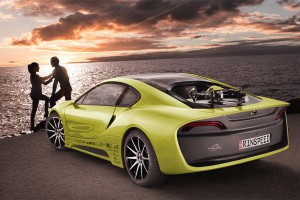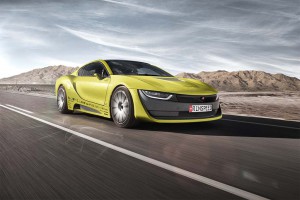We’ve seen some wild and wacky designs come out of the studios of Swiss automotive house Rinspeed over the year, vehicles like the MicroMax car/bus hybrid, and the Dock+Go “backpack on wheels.”
So, by comparison, Rinspeed’s latest concept seems almost tame, at least at first glance. The biggest challenge with getting our mind around the autonomous concept is how to pronounce its name, Ʃtos. No, your computer screen isn’t acting up. As anyone who spent time in a fraternity back in college might tell you, that’s the Greek letter sigma. But should we call this the Rinspeed “Sigma-tos”?
However you choose to pronounce it, the concept coming to this year’s Geneva Motor Show is meant to address some of the issues raised by the emergence of the autonomous vehicles that many experts believe we’ll begin to see on public roads early in the coming decade.
What will come of blending Silicon Valley and Stuttgart (or Detroit or Tokyo), asks Rinspeed founder Frank Rinderknecht? “This process will likely lead to an adaptive, learning and intuitive control software. But it will be a long rocky road.”
Initially, autonomous vehicles are still expected to require a driver to be sitting behind the wheel, ready to take over in an emergency. But the longer-term goal is to allow that motorist to be able to switch to fully self-driving mode, perhaps to swivel their seat back and transform the interior of the vehicle into a mobile lounge.

Rinspeed's new concept car is meant to address some of the issues raised by the emergence of the autonomous vehicles.
Notes a Rinspeed release, “The technical highlight in the interior of the ‘Ʃtos’ is no doubt the folding and retracting steering wheel from ZF TRW. As if by magic, it disappears in the dashboard in a few seconds. This creates lots of space in front the driver who can grab and read a book in comfort the old-fashioned way or can work in a relaxed atmosphere.”
To give the motorist more options, the Ʃtos features two 21.5-inch Ultra HD widescreen monitors on which all sorts of content can be displayed.
The car uses artificial intelligence technology to learn the likes and dislikes of the driver to better handle the users “appointments, wishes and needs.” That helps it display precisely the right information, explains Rinspeed, which “drastically reduces the number of distracting manual entries.”
(New documents may cause big problems for Volkswagen. For more, Click Here.)
The autonomous system itself uses eight HD exterior cameras. That assists a motorist even when using the Ʃtos in manual mode, the consulting firm suggests, by providing “an expanded field of vision that has no blind spots.” The system can highlight potential obstacles to reduce the risk of a collision, while also showing a curb when parking to avoid damaging the vehicle’s lower fascia.
The Ʃtos uses connected car “E-Horizon” technology to receive warnings about traffic, weather and, perhaps, wrong way drivers on a freeway.
(Click Here for details about Ford sales jump in Europe in January.)
The concept also features a system that “permanently monitors the driver’s eye movements and as a result, the vehicle not only knows what the driver has seen, but also what he has failed to see. This allows custom tailoring the displayed warnings and notifications.”
One would expect that the powertrain of the Rinspeed concept is equally futuristic, of course. And the Swiss firm says it is based on the plug-in hybrid BMW i8.
(To see more about GM’s new EV offering for Europe, Click Here.)
We’ll be seeing and learning more about the Rinspeed Ʃtos when it makes its debut at the Geneva Motor Show a few weeks from now.


No thanks.